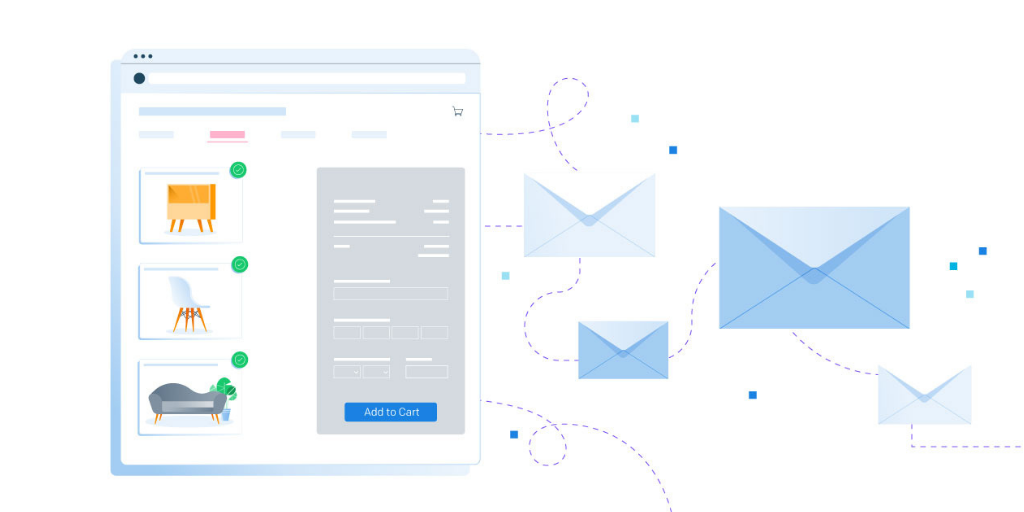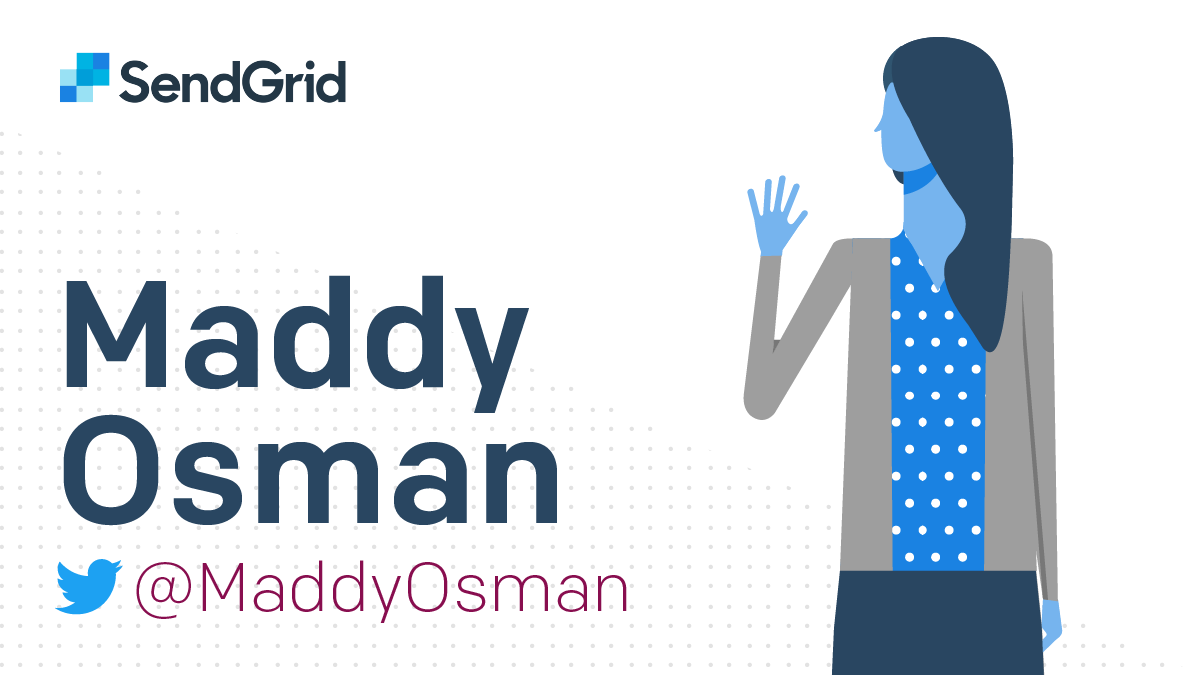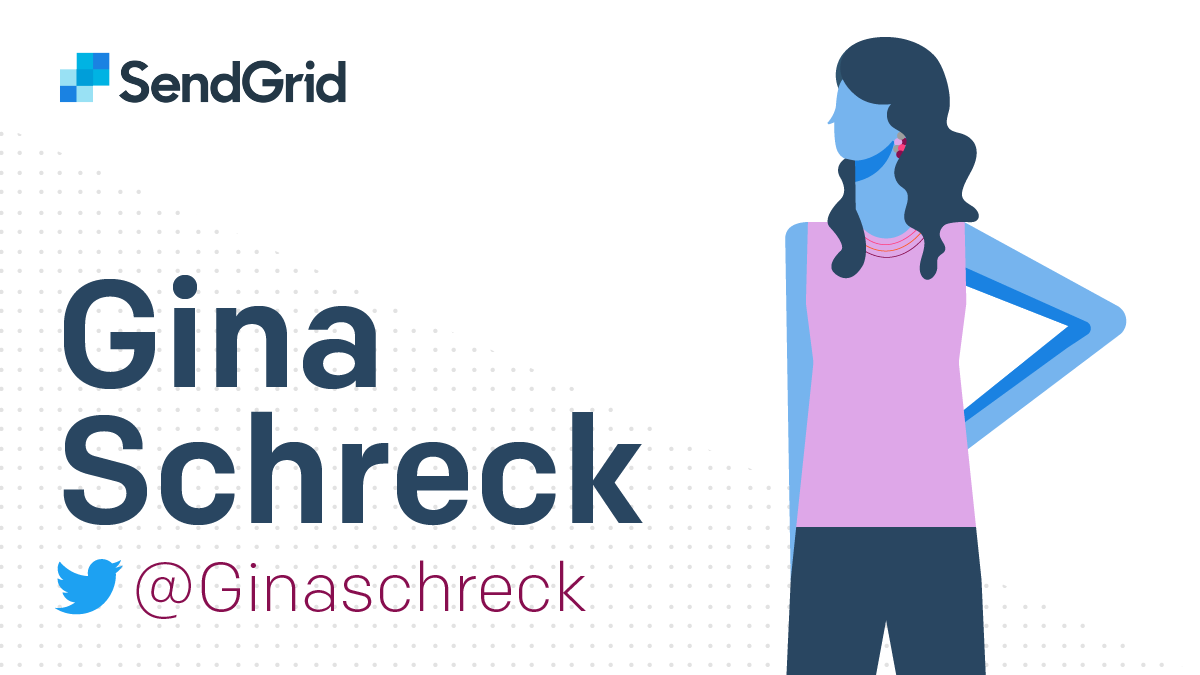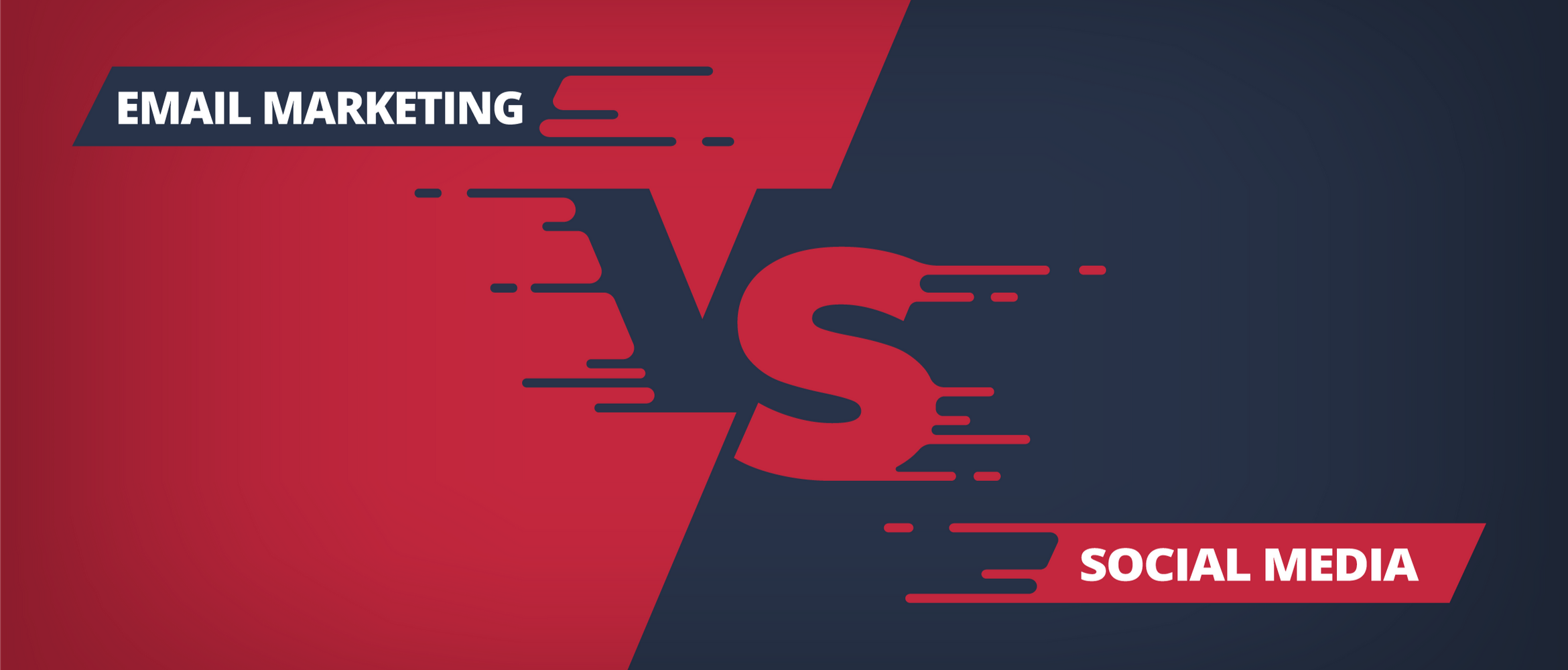Email is
alive and kicking, but
so is social media. Neither is dead, dying, or going anywhere anytime soon. So, if both channels are sticking around, which one should you be prioritizing?
Well, as the world's leading email service provider, we have our own opinions when it comes to email marketing vs. social media marketing (can you guess?). But feelings aside, we're going to take a step back and examine the battlefield from an unbiased perspective...or at least we're going to try to.
You don't need to choose one or the other—instead, learn to use them together to grow your business.
Because there
are pros and cons to both email and social media, and there are also intersecting opportunities. In this post, we'll walk you through it all, and you'll leave with a clear understanding of where email marketing and social media should fit in your marketing strategy.

Chances are both. There were more than
3.9 billion email users in 2018 (over half the planet) and
3.5 billion social media users in 2019.
Old, young, and in-between,
practically every age group uses email. Yet,
the use of social media varies by age and platform. For example, 44% of 25-to-29-year-olds use LinkedIn compared to only 17% of 18-to-24-year-olds.
If you're targeting an individual, there's a
very good chance they have an email address. However, the likelihood that they have a Pinterest, Twitter, LinkedIn, or Snapchat account isn't quite as likely. The same can't be said of Facebook—
Facebook boasts an impressive 2.7 billion monthly users across their products (Facebook, WhatsApp, Instagram, and Messenger).
Before you prioritize a channel, make sure you have an audience there.
Times have changed. Back in the day (yes, social media has been around that long now), you could blast messages to thousands of your social followers and get incredible organic reach.
Today, not so much.
In 2019, to get eyes on your social pages and any of your posts, you have to invest money.
Social media channels have become a pay-to-play world.
No money, no reach. No reach, no engagement. It's that simple.
It's a shame for everyone who invested massive amounts of time and money into growing their organic followings. Not to say organic social posts don't still have a place—they do! They're just a far cry from how effective they used to be.
It makes sense. Social feeds can only show so many messages at a given time. The social media platforms have just decided to prioritize content that's supported by cash.
But you need to be careful throwing your eggs in a basket that you have little control over. You don't own your social media followers—Facebook, Twitter, and the other platform giants do. If they choose to, they can delete your account without warning (even if you've
worked for half a decade to amass 135K followers).
Your email list, on the other hand, is entirely yours. As long as you've worked to
create a legitimate, homegrown (never bought) list, you have the power to contact those email subscribers when you choose.
No social media algorithms. No pay-to-play conditions.
But, there
is the issue of deliverability.
15% of global email never reaches the inbox—even though recipients are expecting it. To keep your marketing message arriving in your recipients' inbox, you'll need to
maintain clean email lists and a positive
sending reputation.
So, yes, getting your emails delivered takes a bit of time and work. But if you play by the rules and do your due diligence, your email program will be just fine.

On Facebook, your
posts only reach an average of 6.4% of your total followers. Email, however,
boasts an impressive 18% global open rate—and that doesn't even take into account those who read your subject line and your preheader text but don't open the email.
Your email list is yours. Even if an email service provider closes its doors, you still have your exported list that you could take to another provider. You can't quite export and import your Facebook followers into Snapchat, though. Wouldn't that be nice?
Email has staying power—it isn’t a trendy app or website of the moment. Who knows where your favorite social networks will be in a few years—anyone remember Myspace? What about Google+ (sorry, perhaps that's too soon)?
While the hottest new social platforms have a shelf life, email has longevity. It might seem as outdated as your parents' AOL dial-up connection, but it's here to stay.
Our opinions aside, what say ye? Do you prefer to receive communications from businesses on social media or email?
To find out, we commissioned a study to find out what Gen Z, millennials, and Gen X think about email. For business-to-consumer (B2C) interactions, an overwhelming
74% of people chose email as their preferred communication method.

Only 24% of people chose social media ads as a preferred method for B2C interaction.
Another study showed that just 9% of people prefer to be contacted by brands on social media.
On the other hand, consumers prefer to
initiate interactions with businesses on social media. In
our commissioned study, 39% of people preferred to interact with a brand by following them on social media, while just 32% preferred to email a company.
What does this mean for your business? If you're sending out communications, your customers likely want it to be through email. If your customers want to reach out to you, there's a good chance they prefer to do it through social media.
This strengthens the argument that
email marketing and social media aren't opposing tools—they're powerful channels to be used in specific ways.
At Twilio SendGrid, we’re a bit biased, but the proof is in the pudding. No digital marketing channel is more valuable than your email program. Email has the highest ROI (return on investment) with
an average of $42 for every dollar invested.
Social media's ROI, on the other hand, is...well, we don't know. Nobody knows. It's difficult to attribute revenue, and each company tracks it differently.
According to data from Statista, marketers find more ROI using email than organic or paid social.
So if you're trying to push a purchase, focus on your email marketing program and support it with your social media channels.
Over 50% of consumers in a survey said social media influenced their shopping decisions. After receiving your email about a product, consumers may check your Facebook or social media account for reviews, comments, and feedback before making a purchase. So while it might not lead to direct sales, social media still plays an important supporting role.
Social media thrives when it comes to uncapped potential. Any social post (yes, even
silly ones about grammar mistakes) can be shared, and shared, and shared until it becomes a raging global phenomenon. Emails don't get shared or posted publicly (except when forwarded)—they're just sent to the subscribed recipients. So there's a
much lower chance that the content in your email will ever be defined as "viral."
Did you know customers reached via email
and Facebook ads are
22% more likely to buy?
Now that I have your attention...
Email marketing and social media marketing work together like bread and butter. Well, as long as you've got a
well-thought-out strategy. Fail to use the channels correctly, and it'll be like buttering your bread with a spatula—not pretty. Use the following tactics, and you'll create golden brown digital marketing toast.
Take your current customer list and create a
lookalike audience on Facebook or Instagram. Facebook will look at the characteristics of your current list and find people with similar qualities and habits.
This lookalike audience helps you reach new people likely to be interested in your business because they're similar to your best existing customers. There's even a good chance a percentage of your target audience will have already interacted with your brand somewhere in the digital universe.
Now, target your lookalike audience with relevant ads to encourage them to like your social page, visit your website, or make a purchase. Give this lead generation tactic a try to find more awesome subscribers.

Based on how your customers interact with your email campaigns, you can retarget them with ads.
For example, if you sent out an
email blast promoting a product, you could retarget those who opened the email but did NOT make a purchase when the product goes on sale.
List building isn't just limited to your website. With social media, you can invite your followers to subscribe to your email newsletter with a couple of techniques:
- Use organic social posts to drive traffic towards landing pages with lead magnets. If a specific post is getting higher engagement rates, pin it to the top of your profile so it's the first thing visitors see.
- Set up lead ads to make the email sign-up process seamless. Lead ads empower your audience to sign up to your email list without leaving the page—one less step in the process.
Wish you could combine your email, data, and display advertising into a single, wonderful tool? Now you can with
Twilio SendGrid Ads!
With Ads, you'll be able to engage and retarget your customers across
Facebook,
Instagram, and
Google Display Ads.
Want to be among the first to gain access?
Submit your information on this page to receive Twilio SendGrid Ads updates and be added to our Beta access list.
Beyond the data, we decided to ask a few modern digital marketing pros how they're using email marketing and social media together. Here's what they had to say.

First, we heard from Denver-based influencer
Maddy Osman, an SEO Content Strategist at
The Blogsmith.
"Today, I have a pretty solid process for both email marketing and social media promotions. I prepare for my email newsletter throughout the week leading up to sending it and usually write my introduction the day before so that I can make sure it goes out on time."
"Similarly, I create most of my social content about a week before I plan to publish it. This system helps me stay on track so that I have a solid foundation while still keeping me nimble enough to add to my planned content if anything comes up."
"My biggest tip for others out there is to create content consistently. For social, posting just a few times a week is enough to stay top-of-mind with your audience. For email, sending a newsletter every two weeks is better than nothing at all! And no matter what,
pay attention to how your audience reacts and adjust accordingly."

Next, we heard from
Gina Schreck, the founder of
SocialKNX, a digital marketing agency and TheVillage Workspace.
"I am a big believer in nurturing relationships with email marketing. We use lots of
lead generation campaigns and then follow that up with nurturing campaigns to stay in touch and make sure we are front and center with potential customers. Most of our nurture emails are sent every 2-4 weeks, while a few are more often."
"If you are just collecting people without connecting, you’re wasting your time. When you don’t stay in touch with people on your social channels or in your email community, you are quickly forgotten. Let people get to know you on your social channels. Build trust through regular connection and THEN they will be open to buying."
Both. The bottom line is that email marketing and
social media marketing should both have a place in your marketing strategy. Just like with
email and SMS, there's a time and place for every communication channel.
There is no magic bullet to integrating your digital marketing campaigns, but most marketing efforts will be more effective when you
use multiple channels to support each other.
Capitalize on email marketing and social media's strengths—don't try to push the weaknesses. If consumers prefer you to interact with them through email, prioritize your email communications. And if they prefer to interact with you through social media, make sure you keep clean, up-to-date social pages and quick response times.
Alone, email marketing and social media are two of the most powerful digital marketing channels. Used together correctly, they're an unstoppable force of omnipresent marketing genius.
To learn more about how to integrate your social media and email marketing strategy, check out our
Expert's Guide to Social and Display Ads.
Alone, email marketing and social media are two of the most powerful digital marketing channels. Used together correctly, they're an unstoppable force of omnipresent marketing genius.








 Alone, email marketing and social media are two of the most powerful digital marketing channels. Used together correctly, they're an unstoppable force of omnipresent marketing genius.
Alone, email marketing and social media are two of the most powerful digital marketing channels. Used together correctly, they're an unstoppable force of omnipresent marketing genius.